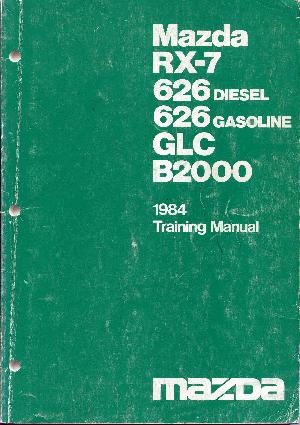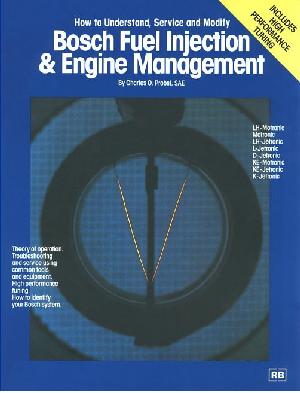Further Reading for GSL-SE Owners
This document last modified September 5, 2003.
If Iíve said it once, Iíve said it a thousand times: a genuine Mazda workshop manual
is essential for any first generation RX-7 owner. See Shop Manuals
if youíve never been subject to my rant before.
The shop manual makes an excellent reference and procedural resource, but it
falls short as a tutorial for explaining theory of operation. And considering
that the GSL-SE variant of the first gen contains systems that are completely
unique among all of Mazdaís rotary-powered vehicles, further reading is warranted.
Iíll recommend three books that I consider an excellent supplement to the shop
manual. Read all three, and Iím sure that youíll be able to look at your GSL-SEís
engine with a new understanding of these systems.
The 1984 Mazda Training Manual

Over two thirds of the book is devoted to explaining changes in the RX-7 for 1984:
12 pages about the operation of, or changes to, the engine internals.
8 pages about the operation of, or changes to, the lubrication system.
5 pages about the operation of, or changes to, the cooling system.
22 pages about the operation of, or changes to, the carburetor on 12a models.
(Most of this is duplicated in the shop manual.)
56 pages about the operation of the fuel injection system and emissions control
systems in the GSL-SE model. About half of this is text and diagrams that does
not appear in the shop manual. This section alone makes this book very valuable
to the GSL-SE owner.
6 pages about the operation of, or changes to, the electrical system. Only one
of these pages appears to be unique to the training manual, as the rest is
duplicated in the shop manual.
29 pages about the operation of, or changes to, the automatic transmission. This
appears to be a very good tutorial about how the transmission works. This section
supplements, not duplicates, the shop manual.
16 pages about the operation of the power steering system. This appears to be a
very good tutorial about how the power steering system works. This section supplements, not
duplicates, the shop manual.
23 pages about the body electrical system. With the exception of a few rather
inconsequential paragraphs about the heater and air conditioning controls,
the rest is duplicated in the shop manual.
Because the 1984 Mazda Training Manual is long-since out of print, it will be
difficult to locate. Try some of the sources that I mentioned in my shop manuals page.
Bosch Fuel Injection and Engine Management
by Charles O. Probst (Robert Bentley Publishers)

The fuel injection system in the GSL-SE is a licensed variant of Bosch L-Jetronic,
manufactured by Nippon Denso. As such, any common introductory text about Bosch
fuel injection systems will be invaluable to understanding the basic operation of
the major engine control components in the GSL-SE. Charles Probstís book is among
the best. Your local bookstore will probably stock it, or you can order it from
Amazon or any of a number of other online
sources.
Be aware that there are only two chapters devoted to L-Jetronic, but the other
chapters - covering both earlier and later Bosch fuel injection systems - will come
in handy when it comes time to work on newer vehicles, or if youíve chosen to
switch to an aftermarket fuel injection controller. In fact, the concepts described
in this book are applicable to an understanding of all modern fuel injection
systems.
Highly recommended.
How to Tune and Modify Bosch Fuel Injection
by Ben Watson (Motorbooks International)

For learning theory of operation, I consider Probstís book to be slightly superior
to Ben Watsonís book on this subject. If you can, get both, as a little redundancy
will not hurt when learning about systems like these. If you can only get one or
the other, either will do, but Iíd still prefer Probstís book. Watsonís book will
be a little more difficult to find at your local bookstore, but
Amazon will get it to you quickly.
Significantly, though, Watson's book is the only one of these two books that describes
how to tune an air flow meter by adjusting the spring that loads the vane. (This job is
not for the novice mechanic, however, and I would strongly advise having a spare air flow meter
onhand before you start messing with your only one.) The unique explanation of air flow
meter tuning makes sense in light of the book's title, which implies that this book will have a
little more of a hands-on emphasis than Probst's book. It does.


